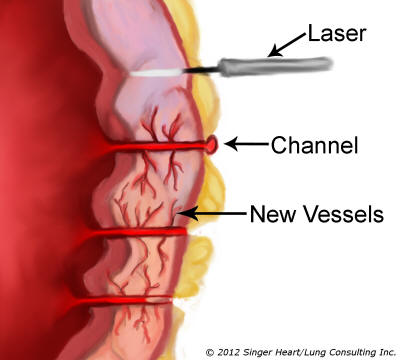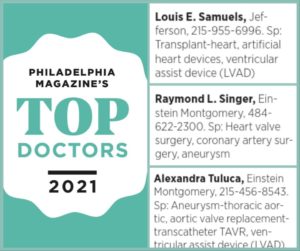Transmyocardial Laser Revascularization (TMR)
Introduced in the mid-1990’s, Transmyocardial Laser Revascularization (TMR) is a procedure that uses a carbon dioxide laser (a device which emits a light of a precise wavelength in an intense, narrow beam) to literally make holes in the heart muscle. This procedure is done in hopes of increasing the blood supply to the muscle.
Transmyocardial Laser Revascularization is only used for patients in whom conventional angioplasty or bypass surgery cannot be done because the coronary arteries are too diffusely diseased to receive either a stent or a bypass graft.
It is not completely clear how the laser works. It is not as simple as making new channels in the muscle as pictured below. Most investigators believe that the channels close off, but that an inflammatory response occurs that creates new, tiny vessels in a process known as neo-revascularization.

Transmyocardial Laser Revascularization
We usually use TMR as an adjunct to bypass surgery. In other words, we will still try to put as many bypasses as possible on the heart and then use the laser in those areas of the heart that cannot be bypassed.
Also, the results are not immediate. The growth of the new vessels may take months to occur. In fact, adding TMR to the bypass procedure may actually temporarily increase the risk of the surgery because of the risk of bleeding and direct damage to the heart from the laser.
However, we have not had any serious complications from using the heart laser.
More importantly, we have seen excellent long-term results with resolution of angina in patients who otherwise would have few, if any, other choices of therapy.


